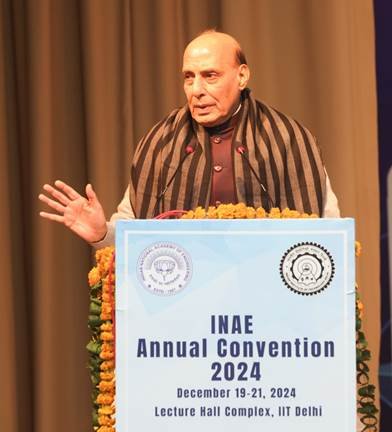IT urged to be futuristic

India’s IT firms must be more innovative as the future growth will be in being able to create futuristic business scenarios and engineering digital disruption rather than coping with its aftermath, said Vice President M. Hamid Ansari.
He highlighted that “the sector has been a major contributor to our growth story in the last 25 years by way of an improved brand image, creating employment, contributing to GDP growth, creating avenues in technology education and contributions to e-governance.”
While the growth trajectory of the sector was well charted, its challenges will come, in the shorter and intermediate term, from industry shifts such as Cloud Computing, evolution in Software as a service models, need to develop new products, Digital Disruption, and shrinking manpower needs because of software automation, he cautioned.
It is likely that present and new clients will increasingly look for innovation partners rather than software partners, he added at the inauguration of New NASSCOM Building, a new campus of Information Technology business body in Noida on Nov 5, 2016 .
While the Global Innovation Index 2016 ranks India 66th out of 128 countries, he assured that the Government was aware of the requirements for creating an innovation environment in India. Although India rose 15 places over the last year’s rank in the index, it still lags behind China at 25, Russia at 43 and South Africa at 54.
He said it was a must for NASSCOM to help India’s technology industry innovate, foster the next generation of start-ups and continue its work with the government to empower the billion Indians who stand at the edge of a digital revolution.
“I am happy to be here today to declare open the NASSCOM campus. It is appropriate that this new campus of our apex Information Technology business body should come up in NOIDA, which is emerging as one of India’s fastest growing technology hubs,” said Ansari.
The industry has not been sitting on its laurels. A recent Nasscom and McKinsey report, titled ‘Perspective 2025: Shaping the Digital Revolution’, says that the industry is “well on track” to grow from US$132 billion in 2014-15 to US$225 billion by 2020 and further touch US$350 billion by 2025.
Of the US$350 billion, exports are expected to account for about US$280 billion with the rest from the domestic market.
The report also predicts that about 1.2 to 2 million new people will be added to the industry for the next US$100 billion growth in revenue.
NASSCOM has its task cut out for itself. It must continue to:
- help India’s technology industry innovate;
- help in fostering the next generation of startups that will create the next TCSs, Wipros and Infosys;
- help empower the billion Indians who stand at the edge of a digital revolution that will change their lives for better, and;
- continue its work with the government to help design laws and regulation that are responsive and adaptive.
But an innovation commentator has listed some of the reasons why India has failed to provide its budding entrepreneur or innovator the ecosystem, the resources or the infrastructure, that Silicon Valley provides its potential entrepreneurs.
These are:
- Our educational system is steeped in training implementers, not thinkers;
- There is a significant lack of appetite for taking risks and both Indian families and educational institutions have a ‘play-safe’ attitude;
- There is a lack of start-up funding environment; and
- The slow pace and inefficiencies of the Indian legal system are a deterrent to innovative sprit.
/fii-news.com








